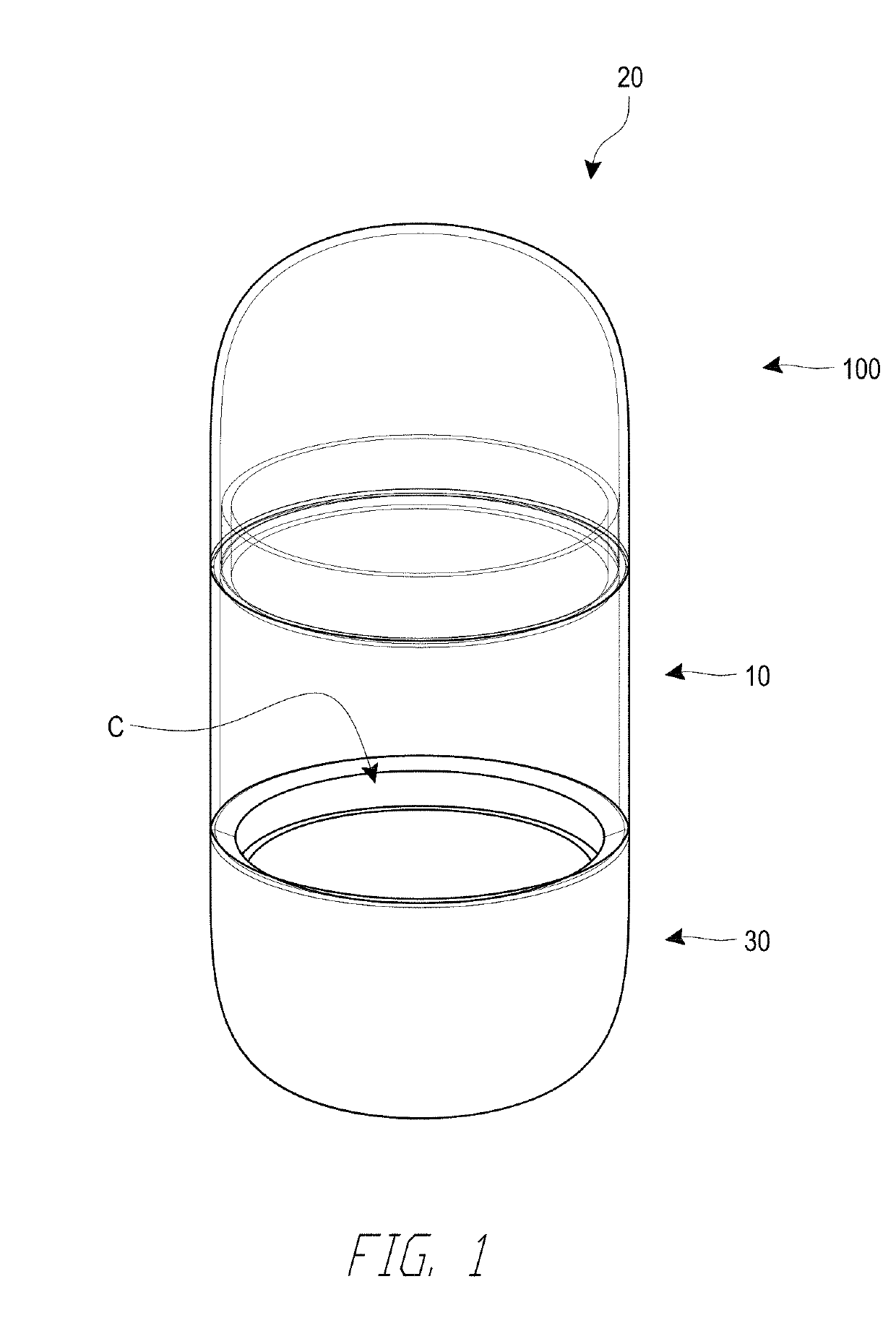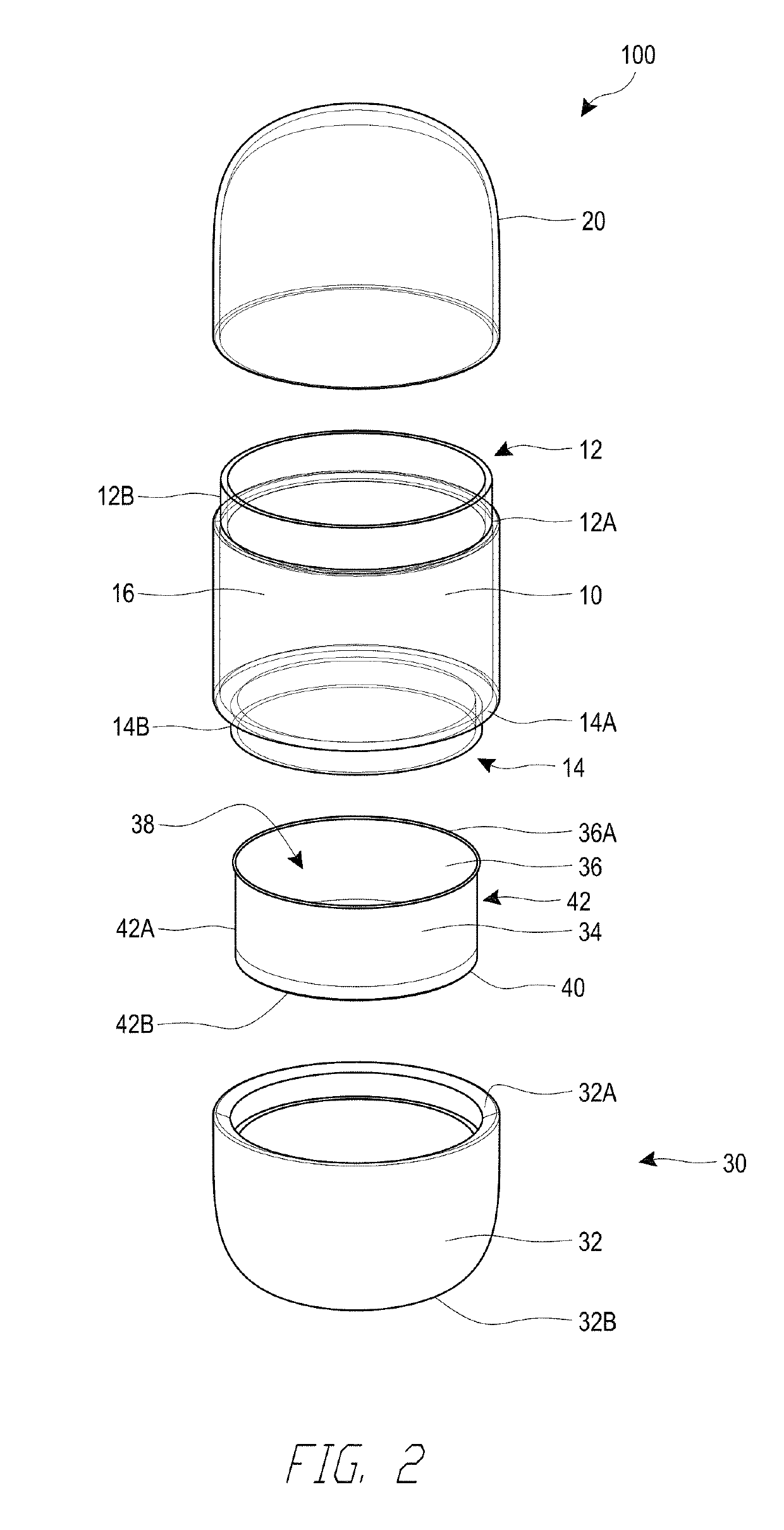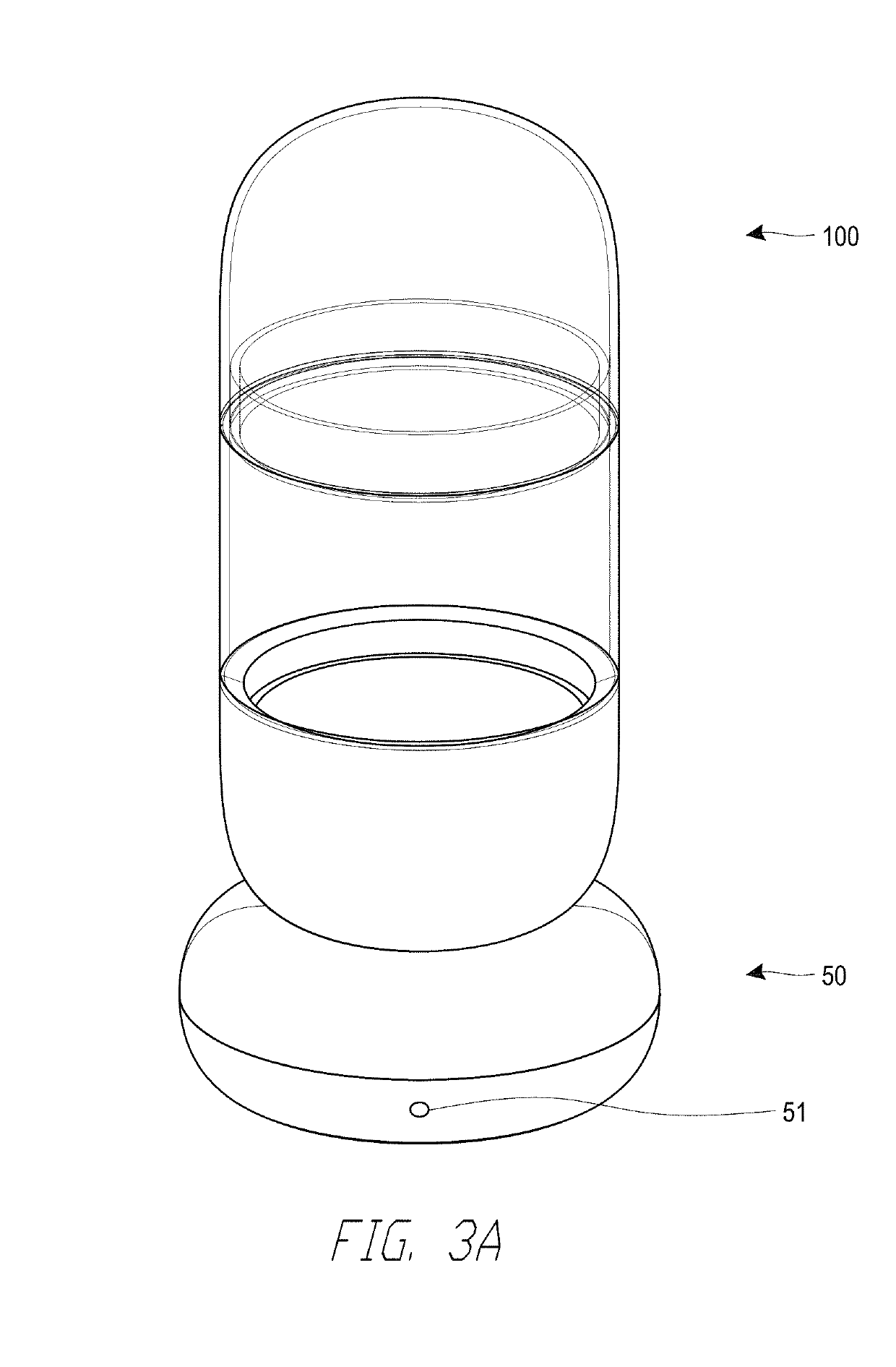Actively heated or cooled infant bottle system
a bottle system and active heating technology, applied in the field of active heating or cooling infant bottle systems, can solve the problems of inability to readily heat milk for infant consumption, lack of portability, and difficulty in use by parents and caregivers, and achieve the effect of inhibiting liquid heat loss and preventing liquid heat loss
- Summary
- Abstract
- Description
- Claims
- Application Information
AI Technical Summary
Benefits of technology
Problems solved by technology
Method used
Image
Examples
Embodiment Construction
[0046]Disclosed herein are drinkware container systems with active temperature control (e.g., actively heated drinkware container systems, actively cooled drinkware container systems, actively heated and cooled drinkware container systems). Though the figures and description of the instant application may refer to the drinkware container system in the context of an infant bottle system (e.g., baby bottle, sippy cup), the features disclosed herein for the drinkware container system also apply to (and can be incorporated in) other drinkware (e.g., cups, mugs, travel mugs) and plateware (e.g., bowls, plates, platters, serving dishes, etc.). Also disclosed herein is a power base or smart base (e.g., electronic base) that can be used with the actively heated or cooled drinkware container. As disclosed herein, the power base or smart base (e.g., electronic base) can also be used with conventional drinkware containers (e.g., with conventional infant bottles, sippy cups, etc.) that do not h...
PUM
 Login to View More
Login to View More Abstract
Description
Claims
Application Information
 Login to View More
Login to View More - R&D
- Intellectual Property
- Life Sciences
- Materials
- Tech Scout
- Unparalleled Data Quality
- Higher Quality Content
- 60% Fewer Hallucinations
Browse by: Latest US Patents, China's latest patents, Technical Efficacy Thesaurus, Application Domain, Technology Topic, Popular Technical Reports.
© 2025 PatSnap. All rights reserved.Legal|Privacy policy|Modern Slavery Act Transparency Statement|Sitemap|About US| Contact US: help@patsnap.com



